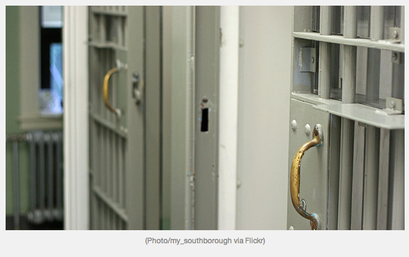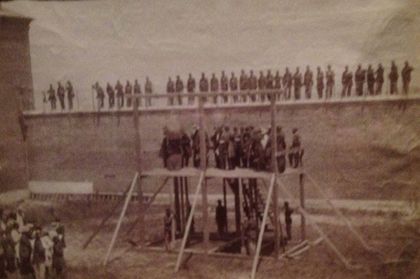AlterNet / by Chauncey DeVega
According to conservatives, the news media has a “liberal bias”: this is a foundational tenet of the Right-wings propaganda and disinformation campaign against the American people.
Black youth are running amok in mass and attacking white people across the country in a bacchanal of violence known as “the knockout game”. But, if there is a “liberal media”, why is the knockout game story being circulated by such “liberal” news outlets like MSNBC, CNN, The NY Times, USA Today, and others? Why would the liberal media legitimate the knockout game narrative instead of suppressing or covering it up?
The “liberal media” is a myth and a lie. There is no liberal media; there is only a corporate media. The knockout game is a moral panic wherein isolated incidents of random street crime are reframed as a nationwide plague upon innocent and vulnerable white people by deviant and naturally criminal blacks.
The sensational allure of the knockout game is drawn from the same racial and cultural imagination as D.W. Griffith’s infamously racist film Birth of a Nation. The cultural trope of the black brute, rapist, and thug, are as central to American memory as is George Washington, apple pie, and the myth of rugged individualism and American exceptionalism.
Consequently, the allure of the knockout game for white conservatives and the Right-wing media (in an era where racism and conservatism are one in the same) is irresistible and instinctive. The supposedly “liberal media” is influenced by similar forces.
Research in media studies, sociology, communications, and political science has repeatedly demonstrated that this supposedly “liberal” news media exaggerates and misrepresents the amount of crime in American society, emphasizes crimes committed by blacks against white people, underplays and does not report crimes committed by whites against black people (and or other white people), and actively reproduces white racist narratives that link African-Americans with crime and criminality.
Ultimately, the moral panic about the knockout game has little to do with crime and public safety. The knockout game meme is a byproduct of a white cultural obsession with black criminals, and a reflection of a political environment where insecurity about changing racial demographics, and the election of the United States’ first black president, have combined to create cognitive and emotional upset for a good number of white Americans. These racial fears, resentments, and anxieties are catered to and nourished by a Right-wing media that birthed and rapaciously disseminated the knockout game narrative.
It is important to note that crime is at record lows in the United States. Most crime is intraracial. A person is more likely to be victimized by someone they know and who looks like them than by a stranger.
Perhaps, the appeal of the knockout game narrative lies in its randomness? Maybe the knockout game is especially pernicious and salacious in that regard? If that is the case, there are many other crimes in the United States that should be given at least the same amount of attention by the news media as has been received by the knockout game.
There is no equivalent moral panic about the mass shootings committed by white men, in which dozens, if not hundreds of people, have been killed and injured. Likewise, there is no mass hysteria about the record growth in the number of white hate groups and militias with the expressed intent of overthrowing the United States government and of waging a war on people of color.
The moral panic, by design, exaggerates isolated incidents into a plague and epidemic that is a threat to all “good” people in “normal” society.
Applying that logic beyond the knockout game, why is there not a moral panic about white female teachers who have been repeatedly caught having sex with their underage students? There is an epidemic of drug use by white folks. Yet, there is no moral panic.
There have been unconscionable crimes committed by white young people against blacks–such as the case in Joliet, Illinois where four white teenagers killed two African-American men, dismembered the bodies, and then had sex on top of the corpses.
Blacks and other people of color are disproportionately the victims of white hate crimes, but there is relative silence by the mass media about that fact. White men are over represented among serial killers. They are also more likely to be child rapists, consume child pornography, commit treason, and participate in domestic terrorism. White men in the finance and banking industries committed criminal acts which destroyed the United States’ and worlds’ economies.
Again, there is no moral panic. White leaders are not called upon to denounce the criminals and thugs in their communities; by contrast, the demand by white folks, conservatives in particular, that black people apologize and “take responsibility” for “black crime”, is a ritual of American civic and public life.
There is no discussion of “white crime” in the United States news media.
When white people commit crimes, they are not represented as a collective reflection of white people. White privilege demands that the ill deeds of white people are framed as individual acts that reveal nothing about white people in mass. Black people are almost uniquely identified with crime, and thus subjected to group stigma because of it.
The link between black people and criminality in American society is so mnipresent that it has been the basis of political campaigns (see the infamous Willie Horton ad and the Republican Party’s decades-long Southern Strategy) and influences racial attitudes on a subconscious level as measured by implicit bias tests, and public opinion as revealed by the impact of symbolic racism on white Americans’ political values and beliefs.
Ironically, the knockout game is more proof that there is no “liberal media”. A liberal media would not–with those few exceptions of responsible reporting that exposed the knockout game epidemic as a moral panic and lie–circulate a narrative born from white supremacist websites, and other fringe, even by contemporary conservatism’s low standards, sources such as WorldNetDaily and the American Thinker.
The phrase “if it bleeds it leads” has been used to describe how the news media frames its stories and coverage. I would suggest that the above language should be modified in the following way: “if it bleeds it leads, especially if the ‘victims’ are white and the ‘perpetrators’ are black”. The “liberal media” and its Right-wing equivalent both abide by this mantra.
The moral panic around black young people and the knockout game is an object lesson in how the “liberal” and “conservative” media may be more alike than different when it comes to their shared obsession with “black crime”.






 TA-NEHISI COATES is a national correspondent at The Atlantic, where he writes about culture, politics, and social issues. He is the author of the memoir The Beautiful Struggle.
TA-NEHISI COATES is a national correspondent at The Atlantic, where he writes about culture, politics, and social issues. He is the author of the memoir The Beautiful Struggle.




